This article was reviewed by Steve Snedeker, professional landscaper.
Sycamore trees are large, deciduous trees that make a great addition to your yard. This tall, long-living tree can create good shade in your landscape. Even though the tree has a long life expectancy, it can die due to disease and other issues. We've researched this concern, so keep reading to find out what to do if your sycamore tree is dying.
If your sycamore tree seems to be dying, you should remove the diseased and dead parts of the tree as soon as possible. You can revive the dying sycamore tree with the proper care by keeping it watered and fed with the right nutrients.
The sycamore tree needs special care so that it can live longer. It can be challenging to inspect the tree because of its large size. However, you can check branches or twigs to determine if they contain living green tissue. Read on to better understand how to keep a sycamore tree alive.
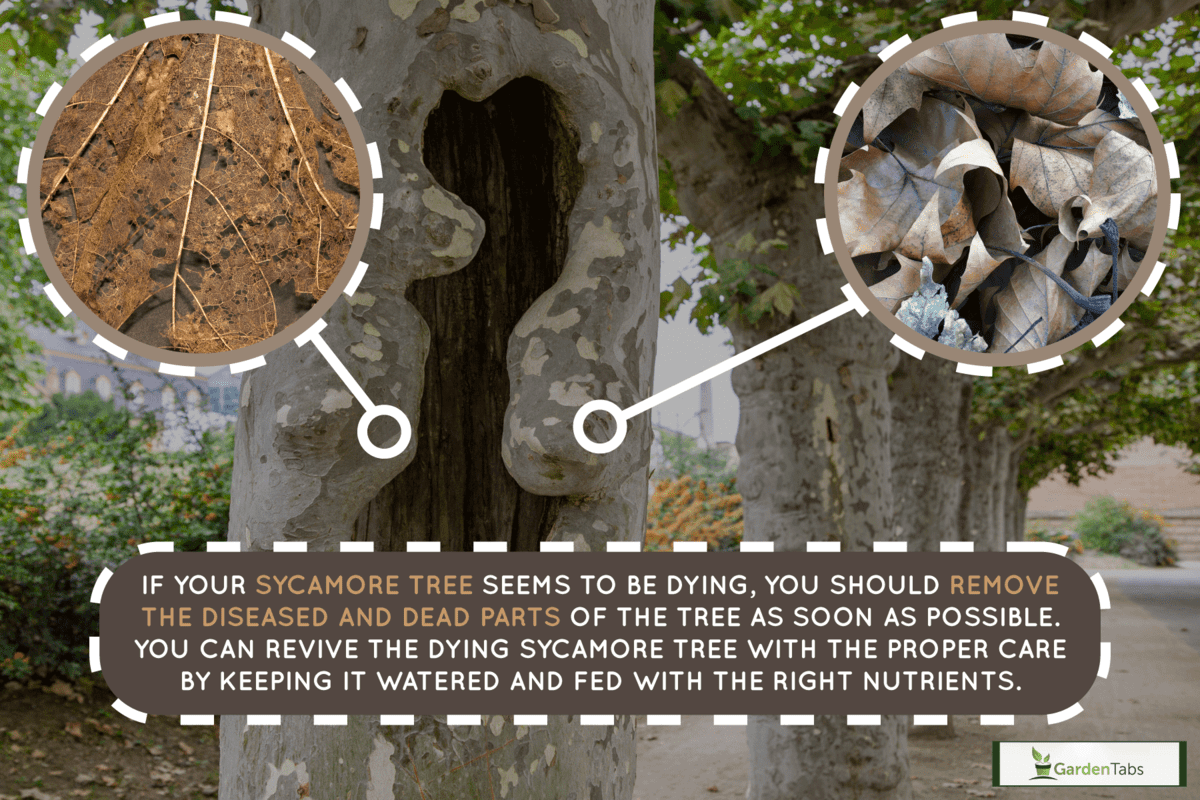
How to Tell if Your Sycamore Tree is Dying
A sycamore tree's lifespan is around 200 to 600 years. The tree is fast-growing, tough, and can tolerate extreme conditions. The sycamore is one of the largest deciduous tree species common in the eastern United States. It can grow between 70 to 100 feet tall.
Although the tree can is tough, it is also susceptible to diseases. The tree may look ill because of a disease brought by the sycamore anthracnose.
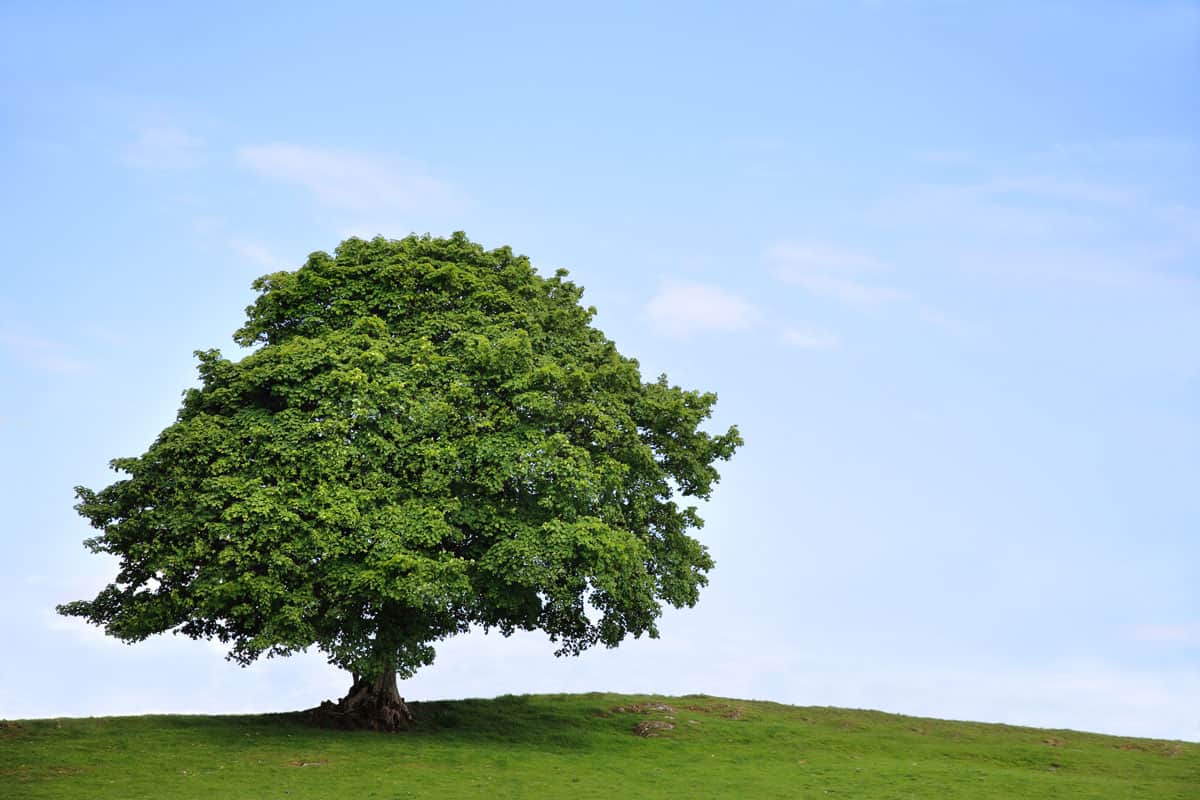
The sycamore anthracnose is the main reason why your sycamore's leaves may be dropping. Anthracnose is a fungal disease that causes substantial defoliation of the tree.
It does not pose serious harm to well-established trees, but the disease is threatening to younger trees. You should check the trees for attacks by anthracnose.
Signs of Sycamore Anthracnose Damage
Here are some signs that your sycamore tree has this fungal disease:
- Bare, brown, and wilted foliage
- Leaf blight in the early summer
- Dead or dying twigs and branches or witches' brooms
- Black or brown lesions on leaves
- The cankers on young and small twigs/branches have sunk
- Damage to young buds and shoots
- Sudden death of immature leaves and twigs
The sycamore can initially lose foliage in the springtime, when the weather is cool and wet.
Other sycamore problems that cause sickness to the tree are the following:
- Sycamore plant bug - The bugs leave their eggs on the tree trunk. The eggs hatch in spring, and the larvae feed and create holes in the leaves.
- Sycamore scale - The tiny pests feed on the tree sap from leaves and branches. You should control the pests during their crawling stage by spraying insecticides.
You need to check and see if pests and bugs infested the tree. Read on to learn how you can determine if your sycamore tree is declining.
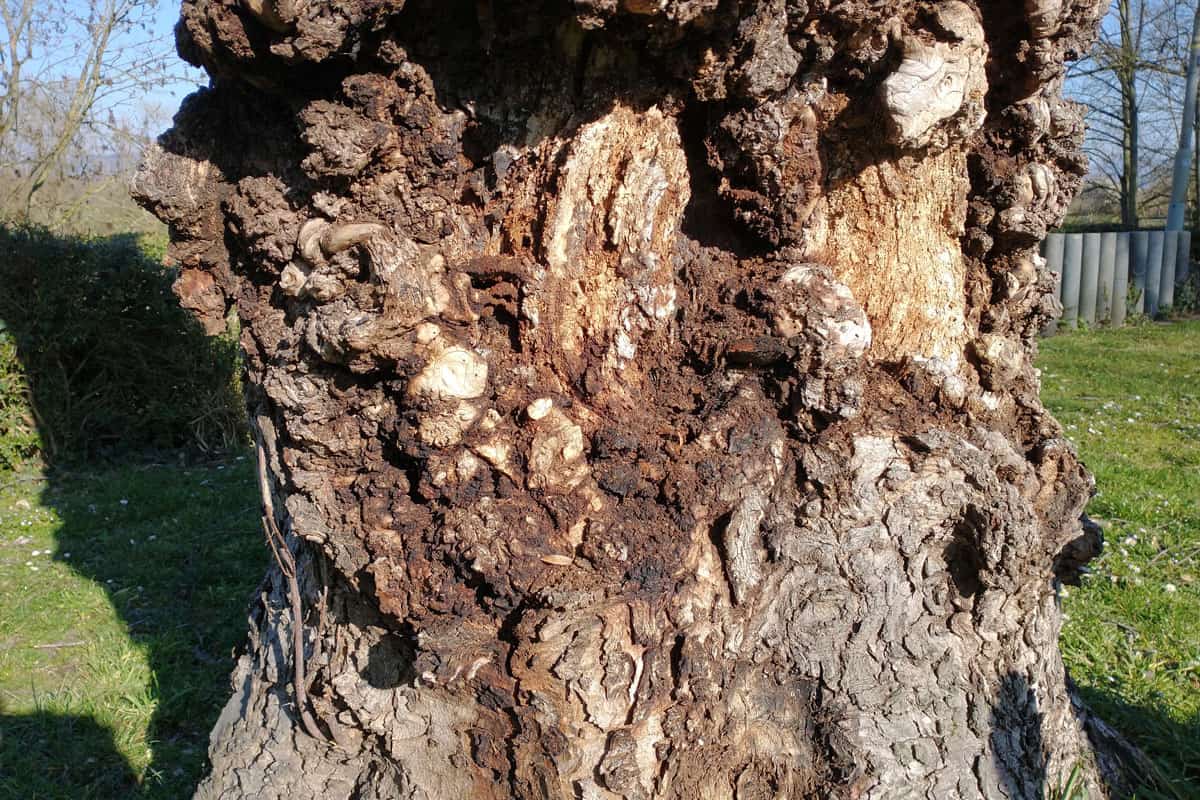
How To Inspect A Dying Sycamore Tree
If you want to check the tree, you can snap a small branch to see if the inner tissue is green and moist. If you notice that the tissue is dull and dry, the tree is dead.
Here are noticeable signs that the tree is declining:
- Large and numerous holes and cavities along the trunk
- Insects tunneling inside the wood
- Cracking of the bark
- Browning leaves during the growing season
For the larger trees, you have to make a closer visual inspection. Follow these tips to check the trees:
- Observe if the tree branches are bare during late spring or summer.
- The leaves are only growing on one side.
- There is a significant loss of leaves.
- You can see cracks, wounds, or openings in the bark.
- There are big patches missing in the bark.
If you can't determine the damage to the sycamore trees, you can ask a certified arborist for help.
What To Do With A Dying Sycamore Tree?
Once you ascertain that the tree is dying, you should take the proper actions to save it.
First, clean up the fallen leaves and twigs immediately and dispose of them properly to avoid a fungus spread. You should also cut the dead twigs and branches that are reachable. Remember to disinfect your shears to prevent fungal spread.
You should wait for the tree to develop new leaves and shoots. You can spray the appropriate fungicide to protect the new growth.
It will take a while to see improvements, but you need patience to grow a tall, healthy sycamore tree.
How To Prevent A Sycamore Tree From Dying?
Based on the recommendation of experts, you can protect your sycamore trees by applying the following fungicides:
- Chlorothalonil
- Copper fungicide
- Thiophanate-methyl
It is best to apply the fungicide during spring, but you might need to apply it if you see problems. A large sycamore tree is difficult to treat, so an arborist will inject some antibiotics to keep it alive.
Pruning is also vital to keep the tree healthy. When pruning, you remove the diseased and dead parts to maintain the strong structure of the tree. Doing so minimizes the spread of fungi and the breeding place of bugs.
Occasional removal of live branches can help improve air circulation and allows sunlight into the canopy. Also, removing branch stubs promotes the healing of tree wounds.
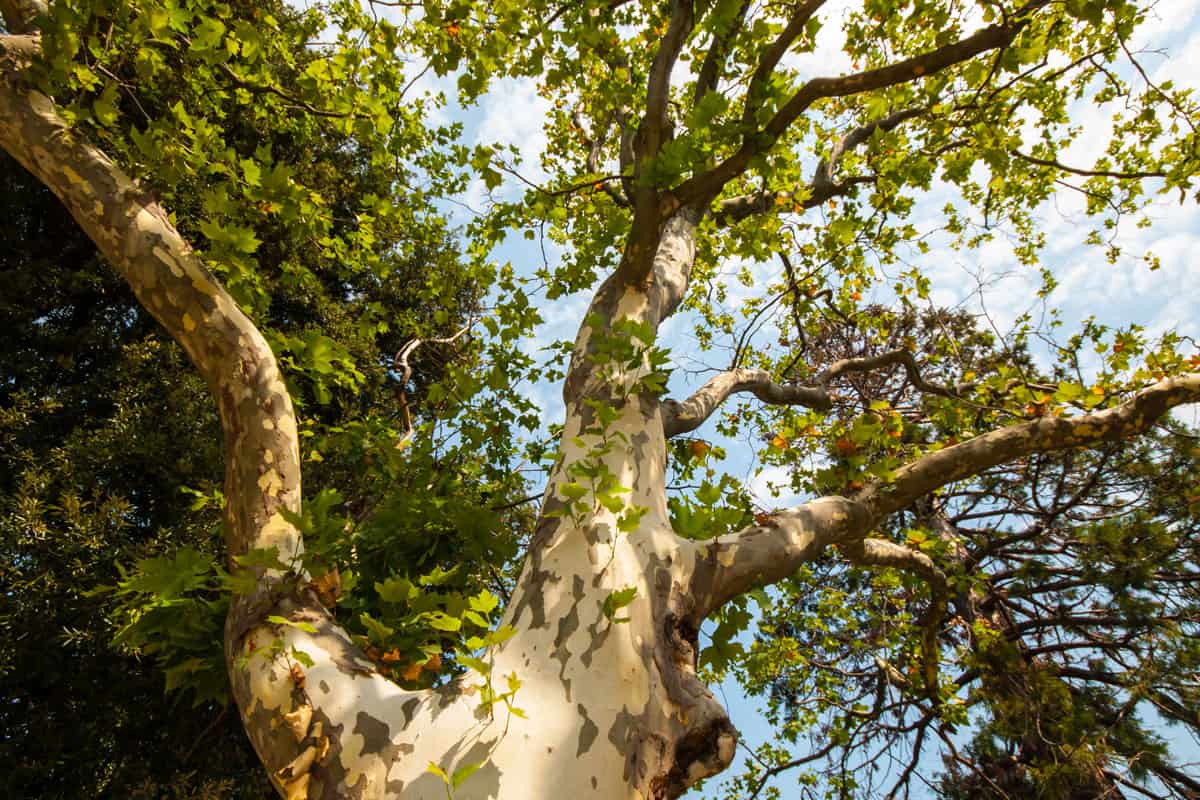
Why Do Sycamore Trees Shed Their Bark?
The bark is an important part of the tree. You might wonder if the shedding of bark signifies that the tree is dying. For some trees, shedding is a sign that the tree is sick and dying. However, it is normal for sycamore trees to shed their bark because they are growing.
The tree sheds a mix of white and mottled bark, which is a good sign of normal growth.
You will notice aggressive shedding after windstorms or heavy rain in the hot summer months. Mature trees will shed more frequently than young ones. In addition, bigger trees will have more bark debris.
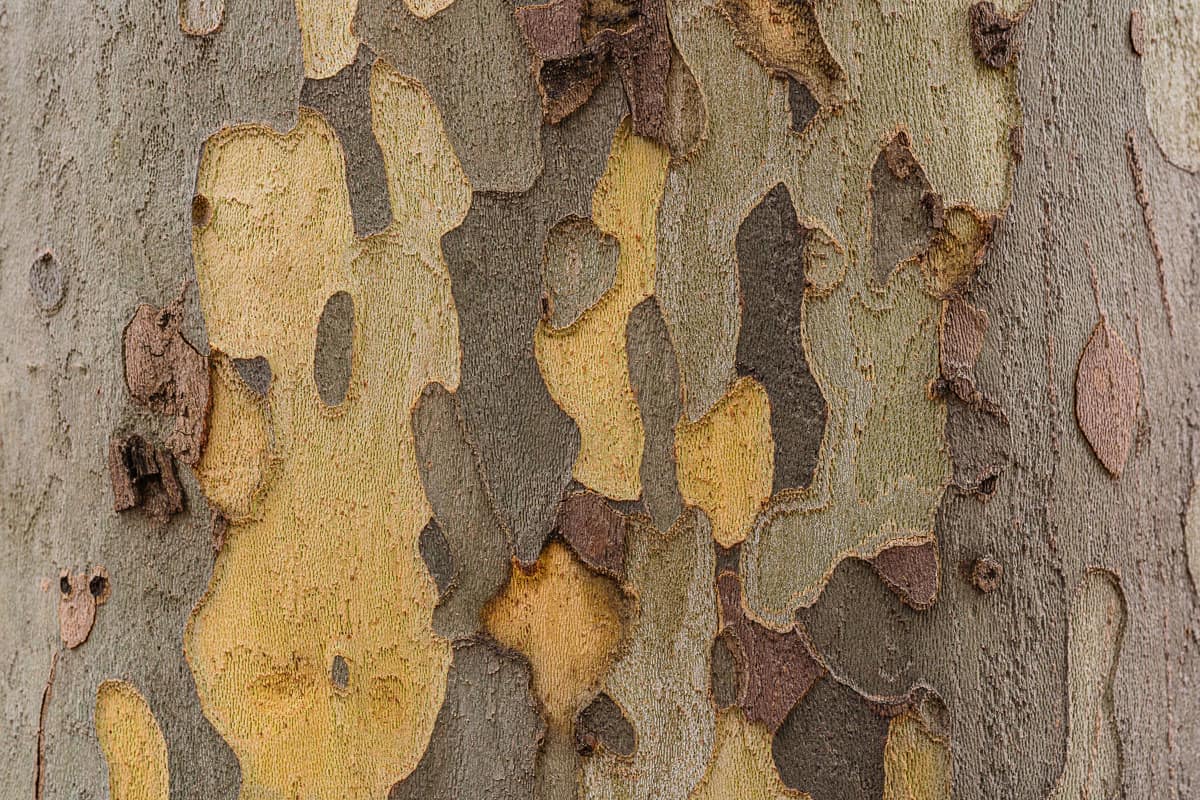
There is also a theory from the New York City Department of Parks and Recreation stating that shedding is a defense mechanism of the tree. Regular shedding is the tree's way of keeping out fungi and parasites.
You should check if the peeling reveals bare wood. If that is the case, it can be a sign that the tree is ill. That sign alone does not mean that the tree is dead, so you should also check for other signs.
Should I Cut Down My Sycamore Tree If It Is Dying?
You should cut down the sycamore tree if it is leaning and more than 50% of its trunk appears dead. Diseases caused by anthracnose and pests can be severe, rendering the tree useless.
Large branches might fall off the tree and injure someone, so you should take steps to remove the tree. You should to ask professionals to cut down the tree with the right equipment.
It is dangerous to cut down a 100-foot sycamore tree by yourself. You will need manpower to bring down the tree safely. There are also local state regulations that you should to follow.
On the other hand, you do not need to cut down the tree if it is not leaning, the branches are intact, and less than 50% of its trunk is damaged. Keep an eye on the tree to see if it recovers over time.
In Summary
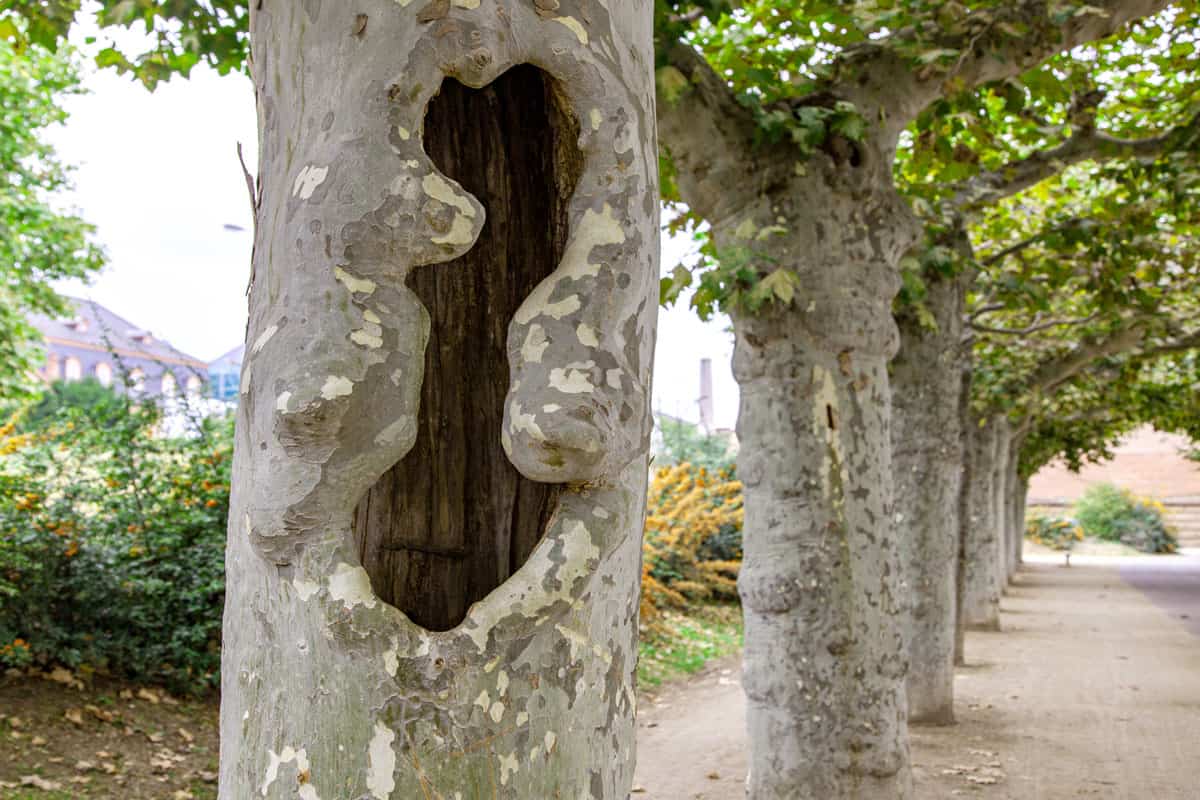
A sycamore tree can show signs that it is dying. You will see deterioration and damage in the leaves, trunk, and bark. The tree is also vulnerable to anthracnose fungus and other pests that cause the plant to get sick. It can be difficult to treat larger trees if these are present.
Proper care is vital for keeping a sycamore tree alive. Spraying fungicide and pruning and can help the tree. You should remove all diseased and dead leaves to avoid spreading fungal spores and bugs to healthy parts of the tree
The tree can recover on its own. If it is leaning and obviously dead, then it is time to remove it safely. You can always refer to the expertise of certified arborists to check the condition of your sycamore tree.
Maintaining a healthy, lively sycamore tree may seem challenging. However, it will be worth it, because you will have a long-lasting, sturdy tree in your yard.
Learn more about trees from these posts:
